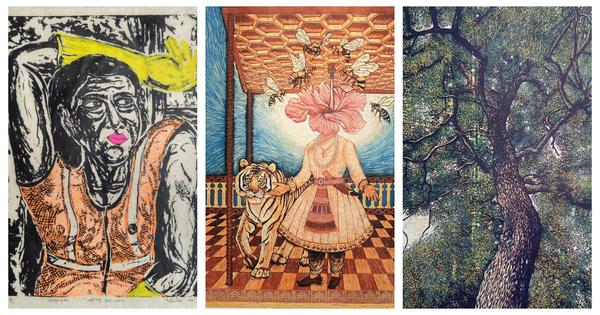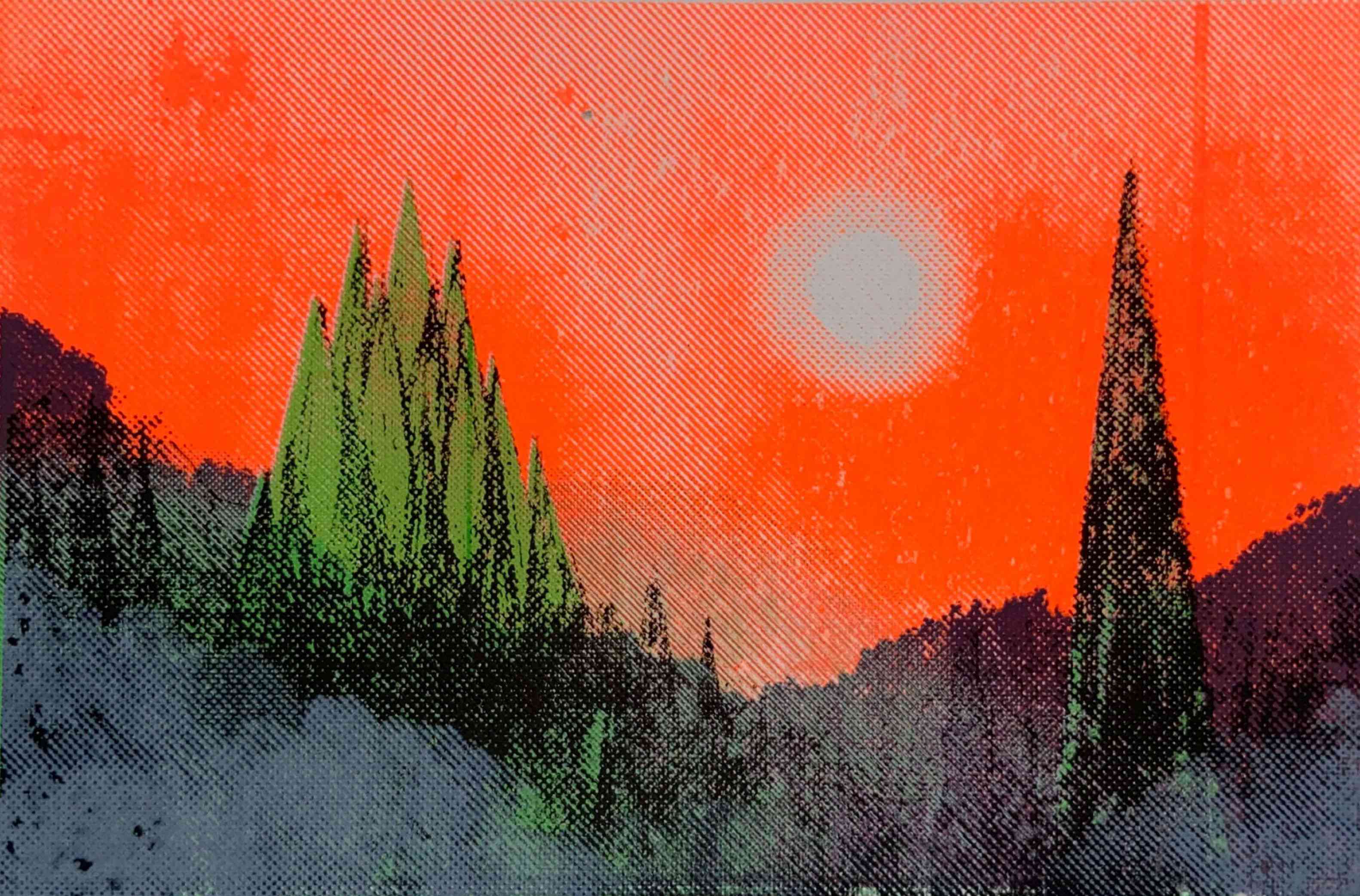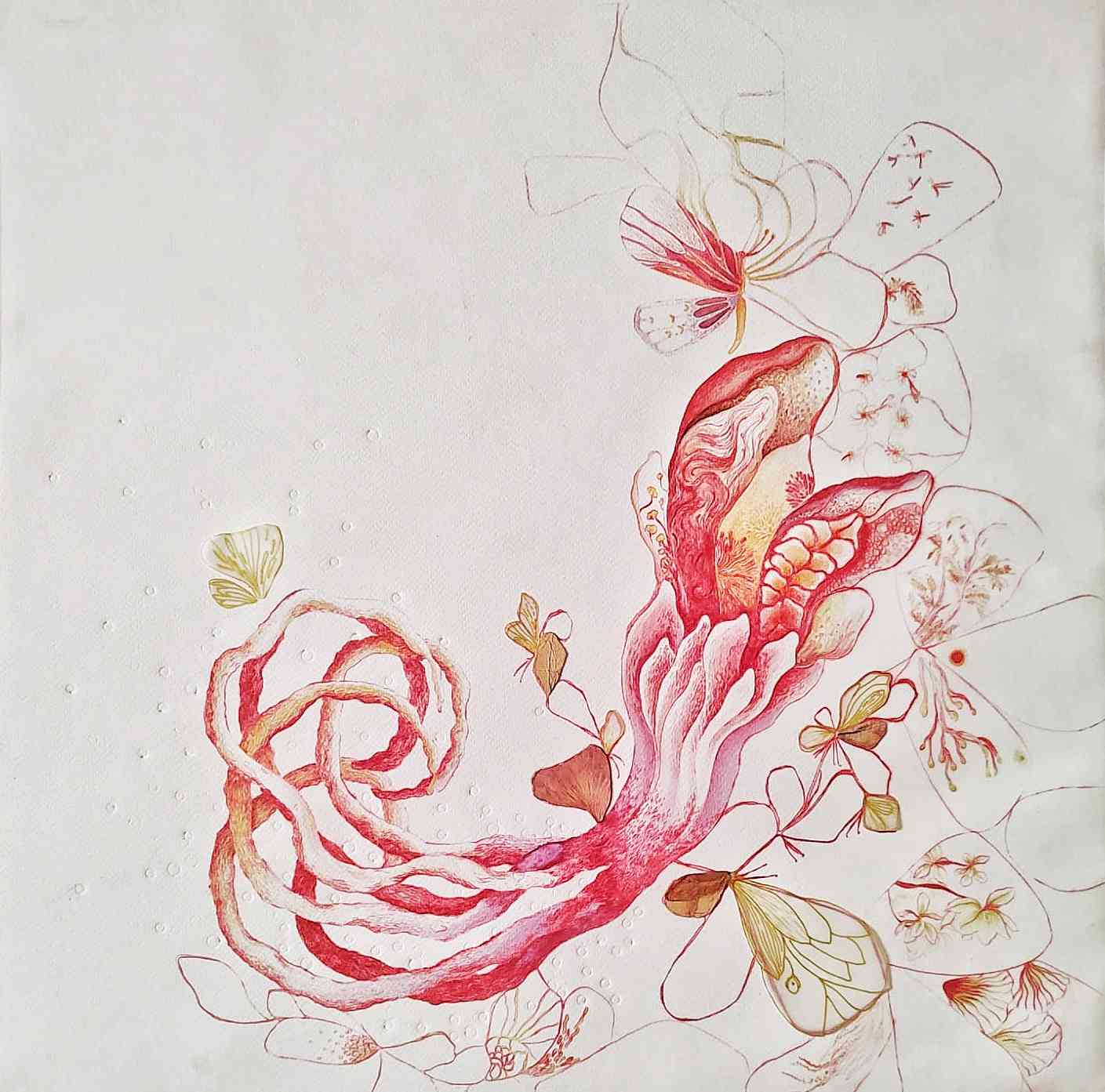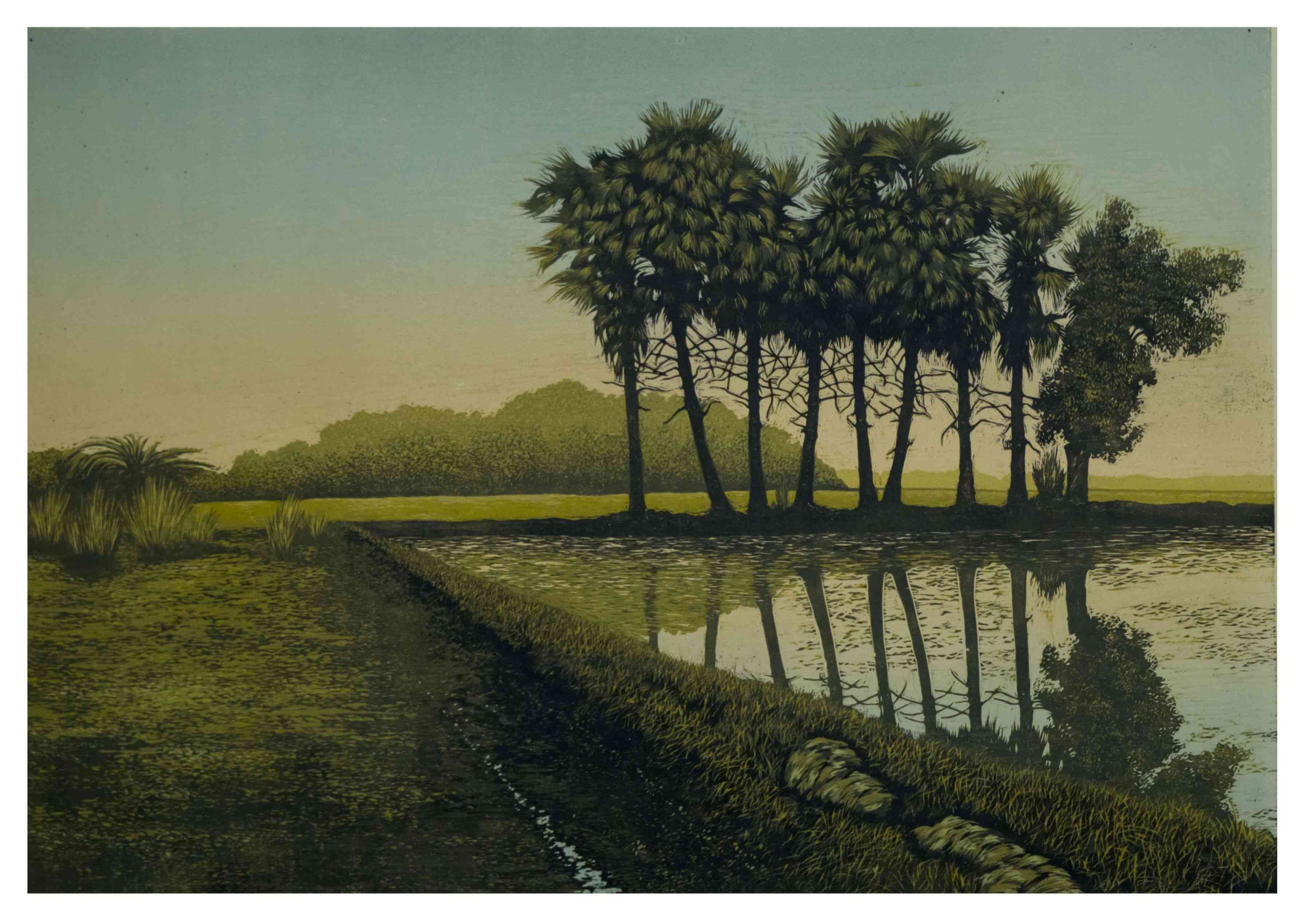
In a world that is increasingly going digital, printmaking – creating artworks by printing – offers a tactile and meditative counterpoint to the speed, precision, and impermanence of virtual creation. That is what Annapurna Madipadiga and Attri Chetan attempted to emphasise with Editions, a group exhibition they curated of 30 young artists from 14 states.
“It is an addictive process,” said Madipadiga. “To explore, draw, burnish, scrap, start from scratch is a unique joy.”
The exhibition, which ran from September 19-28 at the State Art Gallery in Hyderabad, provided a comprehensive overview of printmaking, encompassing both its technical and aesthetic dimensions. Through a selection of mediums (cyanotype, zinc plate etching, linocut, lithography, and serigraphy) and techniques (such as intaglio, relief, screen printing, and aquatint), it underscores the medium’s formal diversity and historical depth.
“Printmaking is often regarded as one of the most intricate practices in art,” said Madipadaga. “It is celebrated for its long and laborious process, which is also what lends it its uniqueness. Each print, even when part of an edition, carries subtle variations that make it distinct. The technique requires patience, planning, and precision, qualities that define the artist’s engagement with the medium.”
Printmaking was introduced to India in the late 15th century by the Portuguese, who established presses to print religious text.
Despite its origins as a colonial instrument of dissemination, printmaking gradually evolved into a visual language of expression and resistance. During the freedom movement, lithographs became powerful vehicles of nationalist messages and resistance.
Around the same time, Indian painter Raja Ravi Varma established his printing press, producing lithographs and serigraphs of mythological subjects. These affordable prints carried his images of gods and goddesses into homes across India, democratising access to art.
The practice gained impetus at Rabindranath Tagore’s Santiniketan university in Bengal, where artists such as Nandalal Bose created works that often go under the hammer for astronomical sums at auctions these days.
In the pre-photography era, prints and lithographs served as vital documents of social life, capturing moments, movements, and moods of a changing nation.
While these early initiatives grounded printmaking within India’s modernist vocabulary, sustaining the practice has posed persistent challenges. Over the years it has had few takers, owing to the fact that the process itself is difficult. Added to that, few collectors have shown interest in these works, leaving it short of patrons.

Editions demonstrated how different artists can interpret the medium. Narendra Kumar used handmade paper from sugar cane pulp as his canvas while Charandas Jadav printed from his observations in redlight areas on mud flaps of trucks. Artist Agwma Basumatari used discarded debit and credit cards to create miniature works of art whereas Raja Boro created intricate woodcut miniatures depicting the landscapes of Shantiniketan.
Shantanik Modak from West Bengal, inspired by the miniatures of Nicolas Roerich and Bireswar Sen, used screen printing to create panoramic views of the Himalaya on post cards. He captures the vibrancy of hills through serigraphy. This technique, originating in China and Japan, involves ink being pushed through a fine mesh onto a surface such as paper, fabric or canvas.
“A stencil is created on the screen, blocking certain areas so that ink passes only through the open sections, forming the desired image,” said Modak. Each colour requires a separate screen, so making multi-colored prints is a layered and meticulous process.
“I usually repeat it seven-eight times to achieve the final output,” he said.

Archi Bharadwaj from Rajasthan creates stunning screen prints of her travels in trains and even created a graphic novel using the technique, lending a unique unevenness and tactile quality to the output. “The process though laborious is therapeutic where one has to move precisely and thoughtfully,” she said. “The expression achieved in printmaking cannot be seen in any other art form.”
As the work at Editions showcased, despite the challenges, printmaking has been adopted by a new generation that values process as much as product. It is, after all, a quiet act of resistance against haste, a reminder that beauty often emerges from patience, pressure and time.

Mallik Thatipalli is a journalist from Hyderabad who writes on art, culture and literature.
📰 Crime Today News is proudly sponsored by DRYFRUIT & CO – A Brand by eFabby Global LLC
Design & Developed by Yes Mom Hosting






